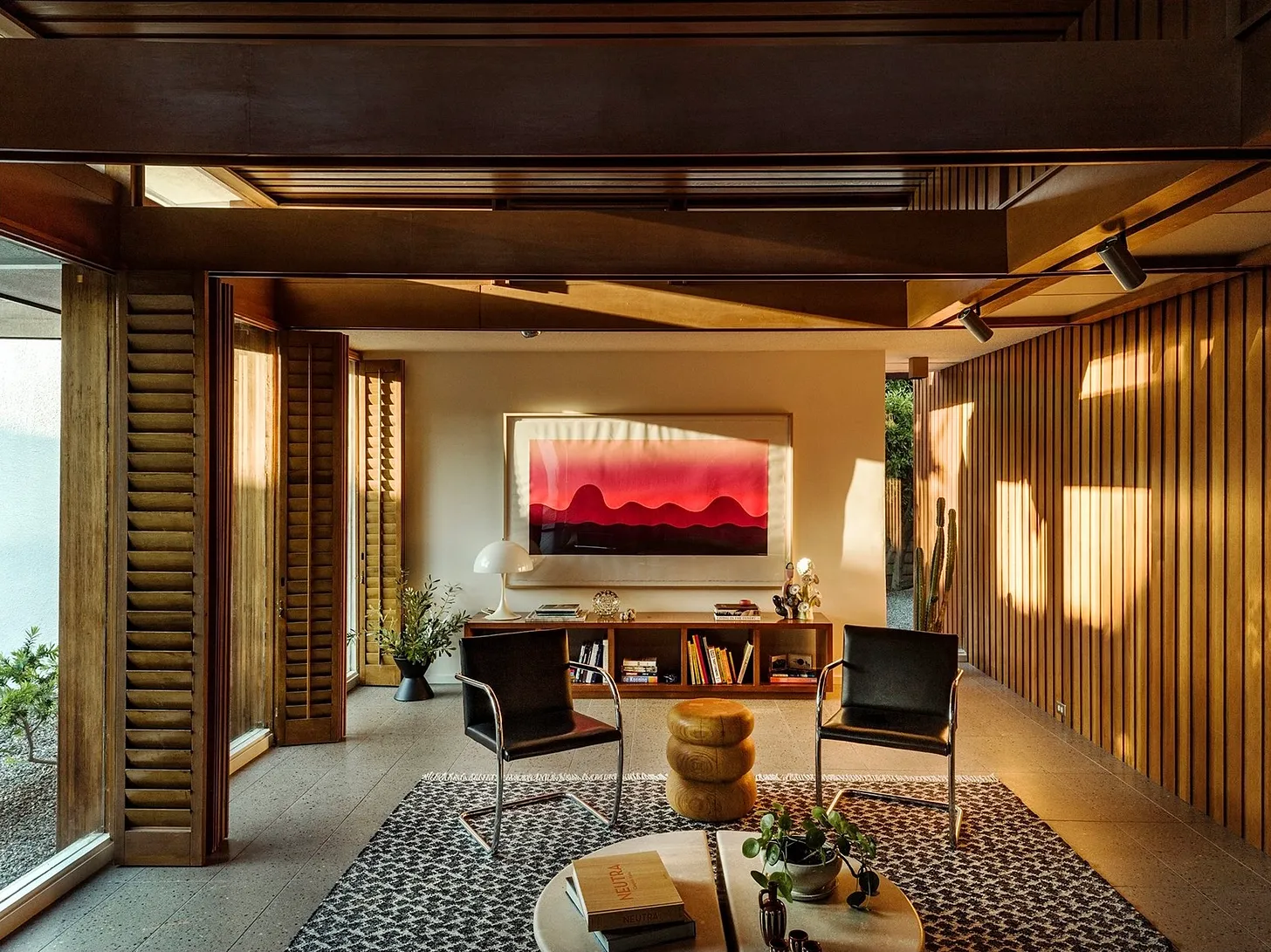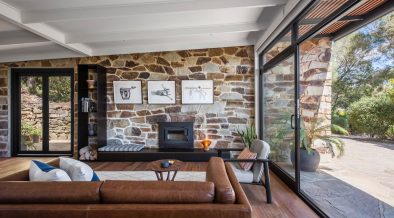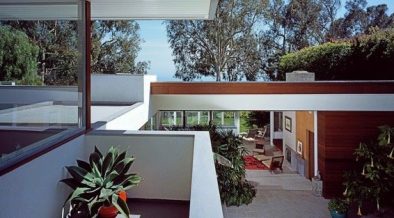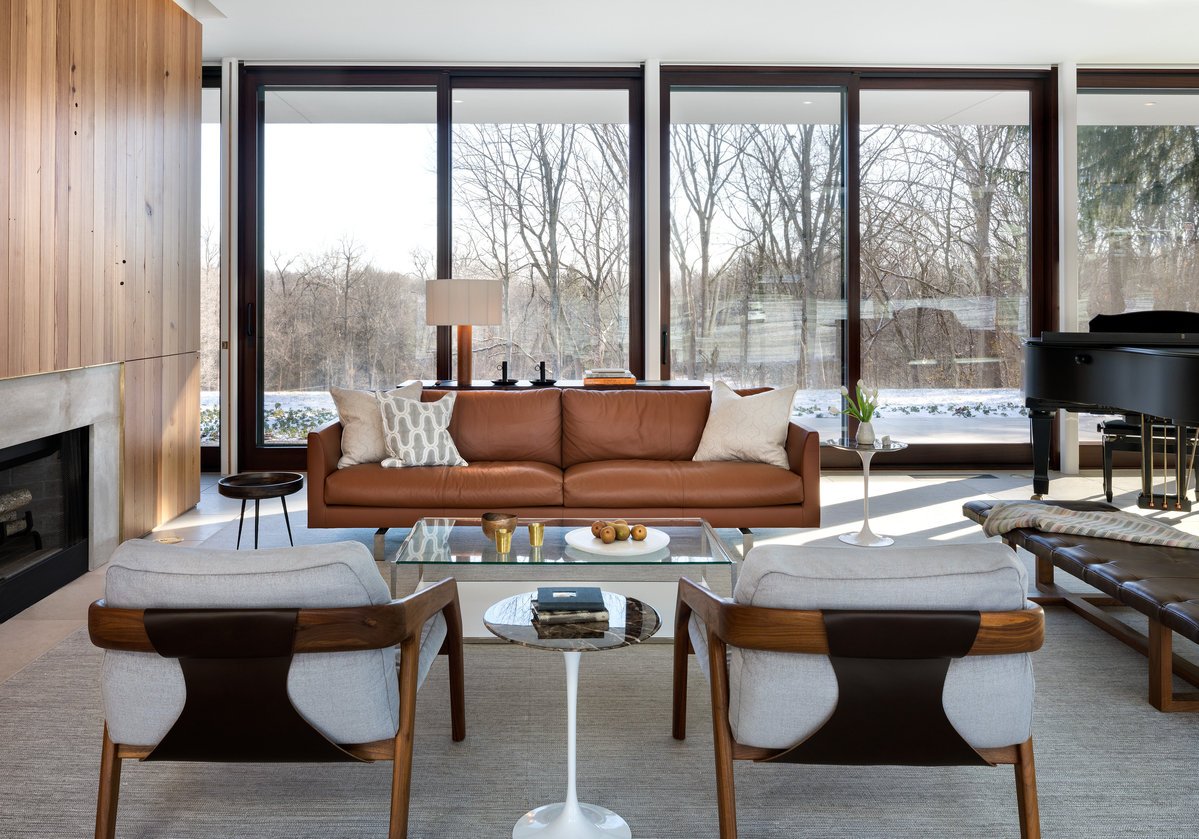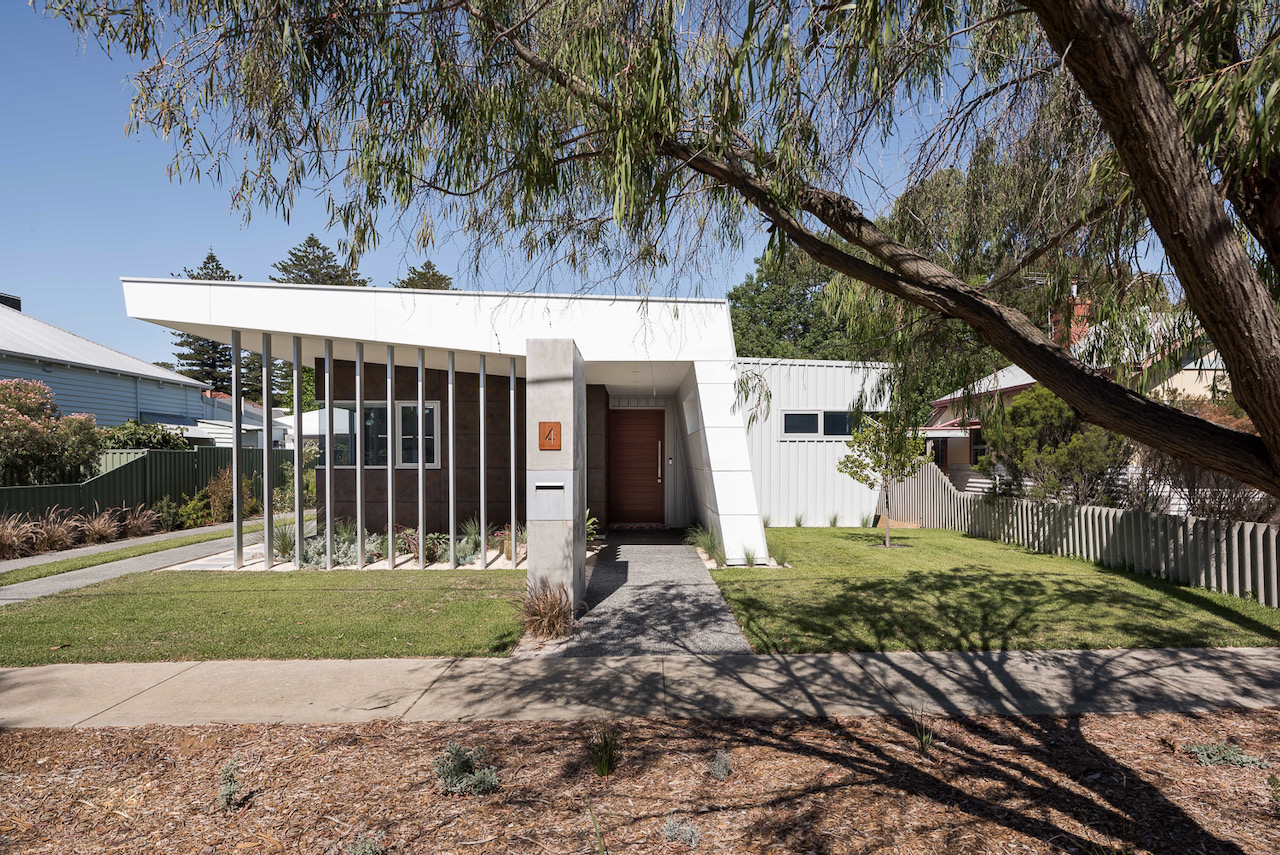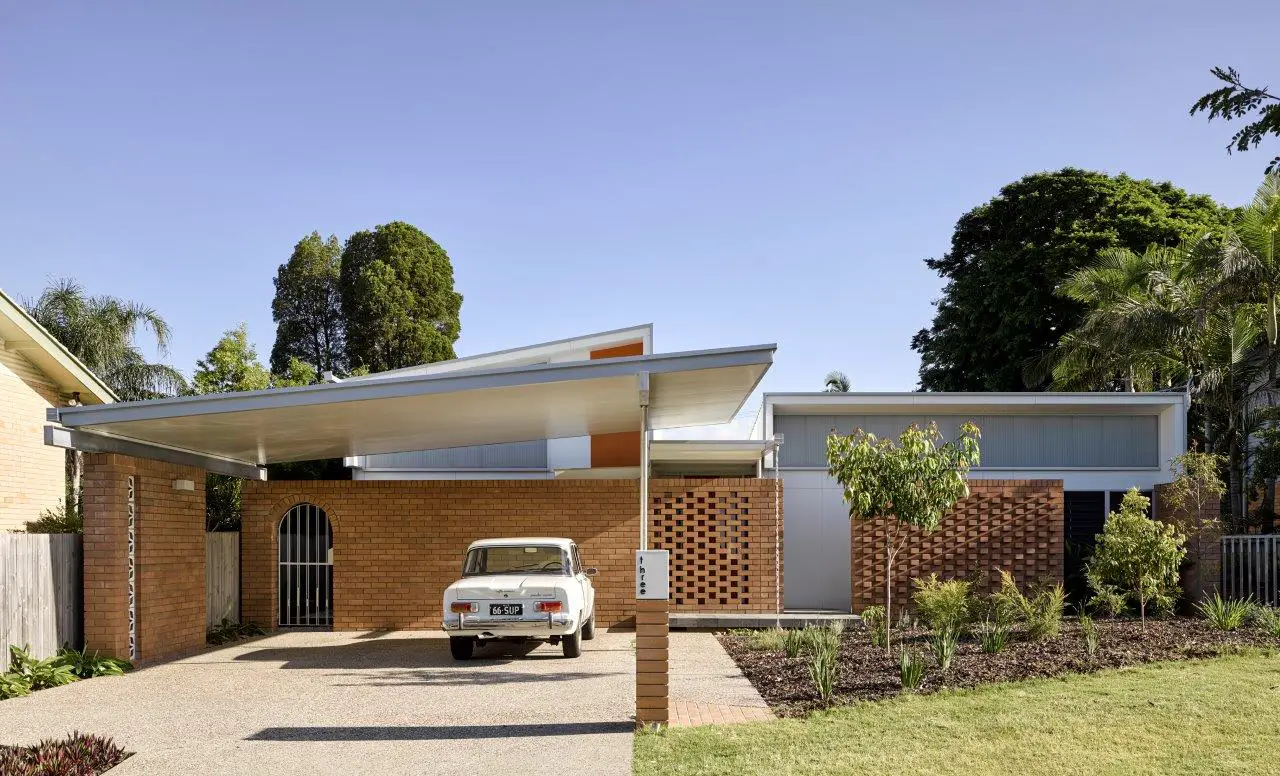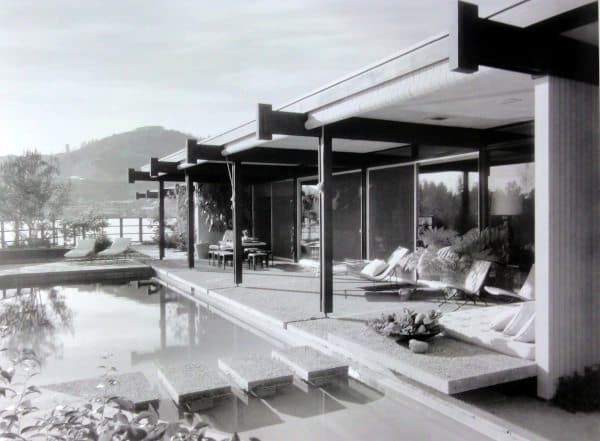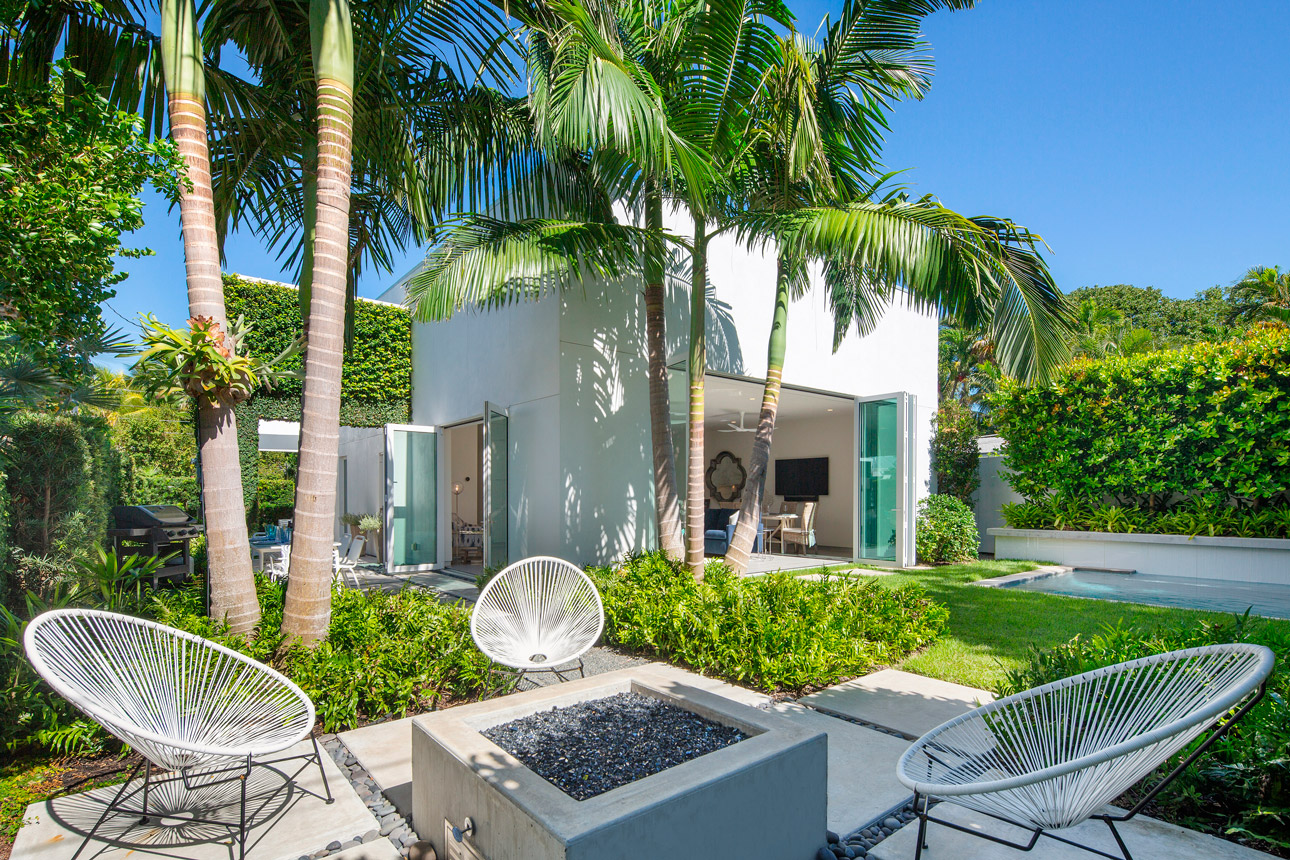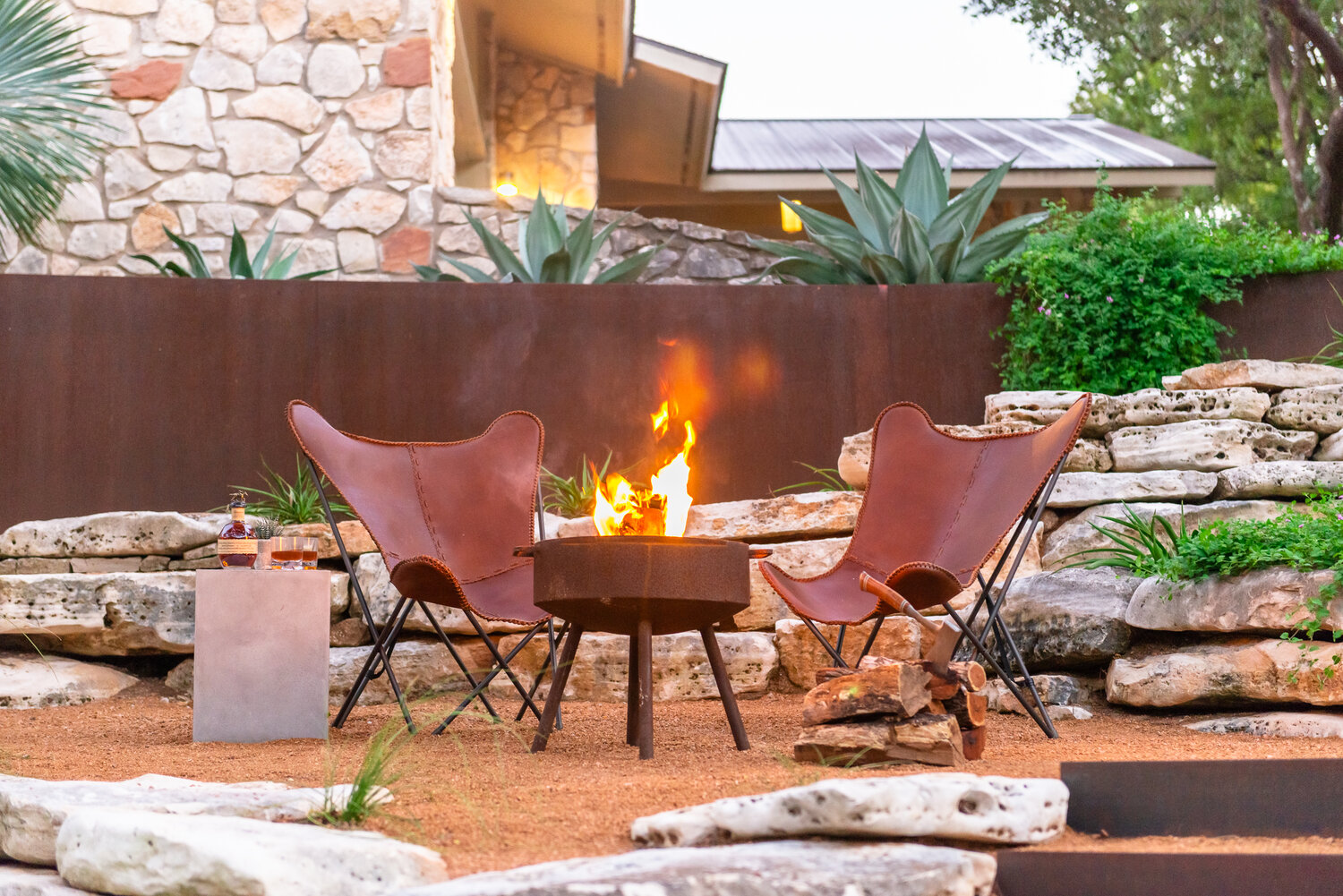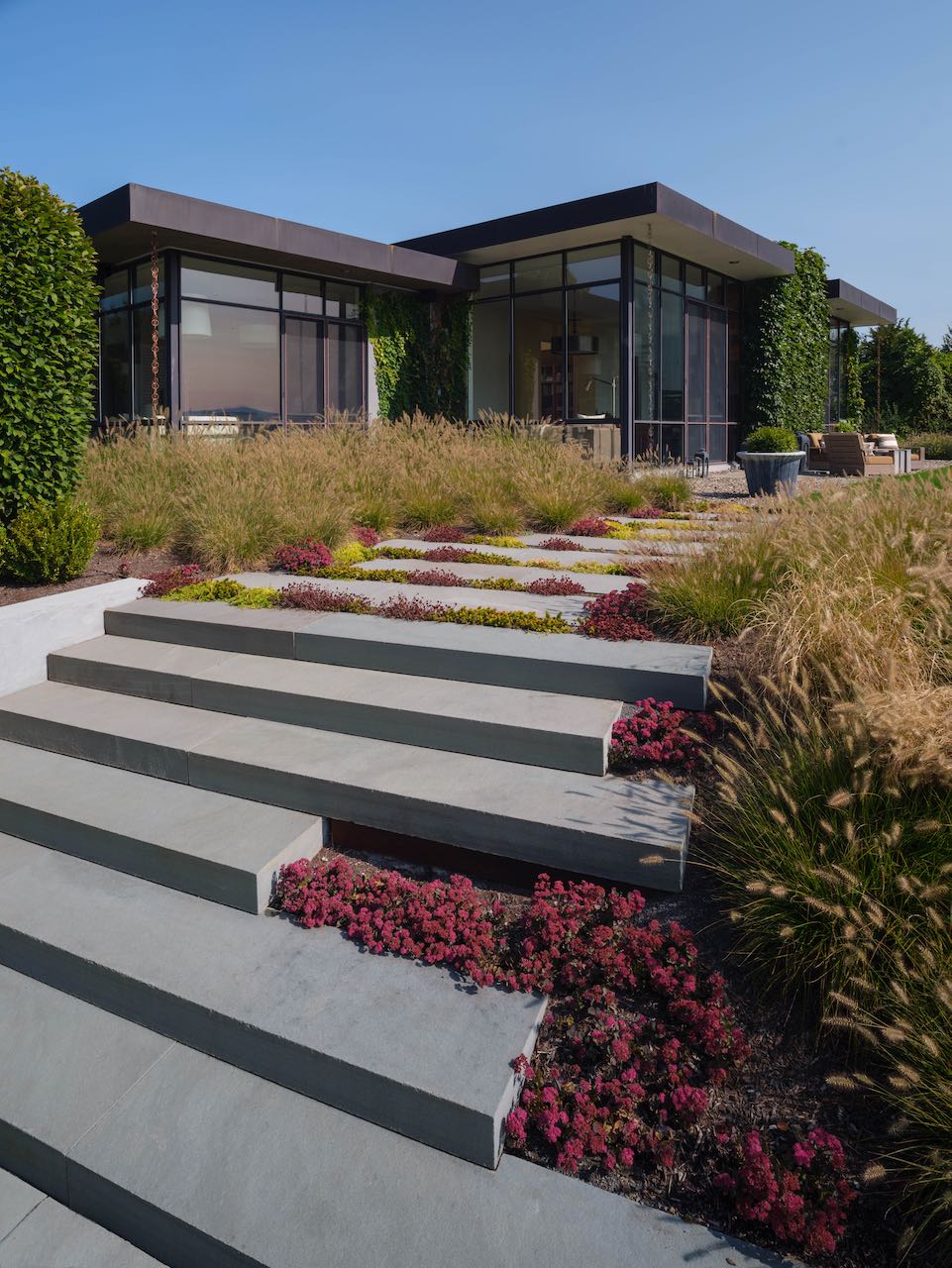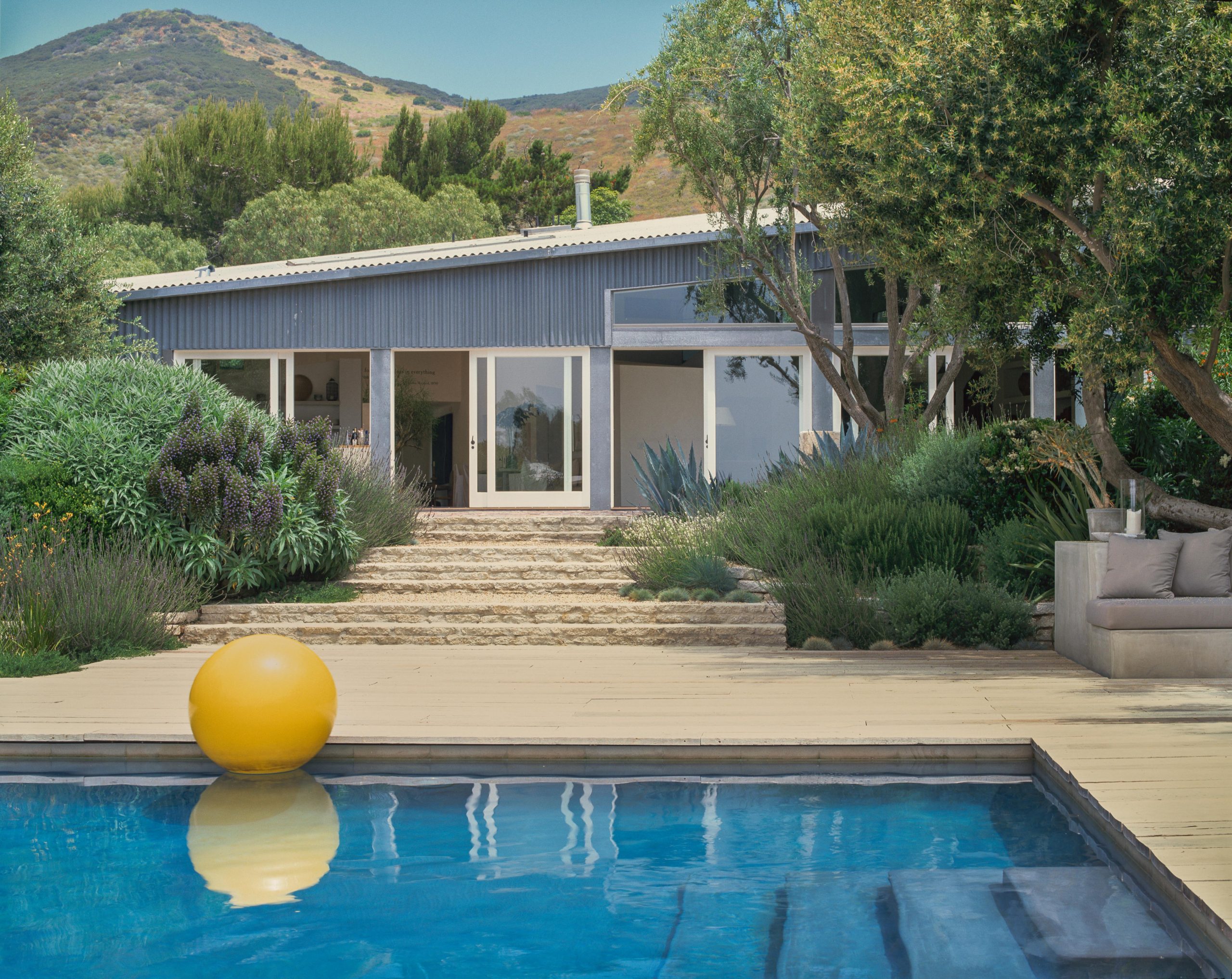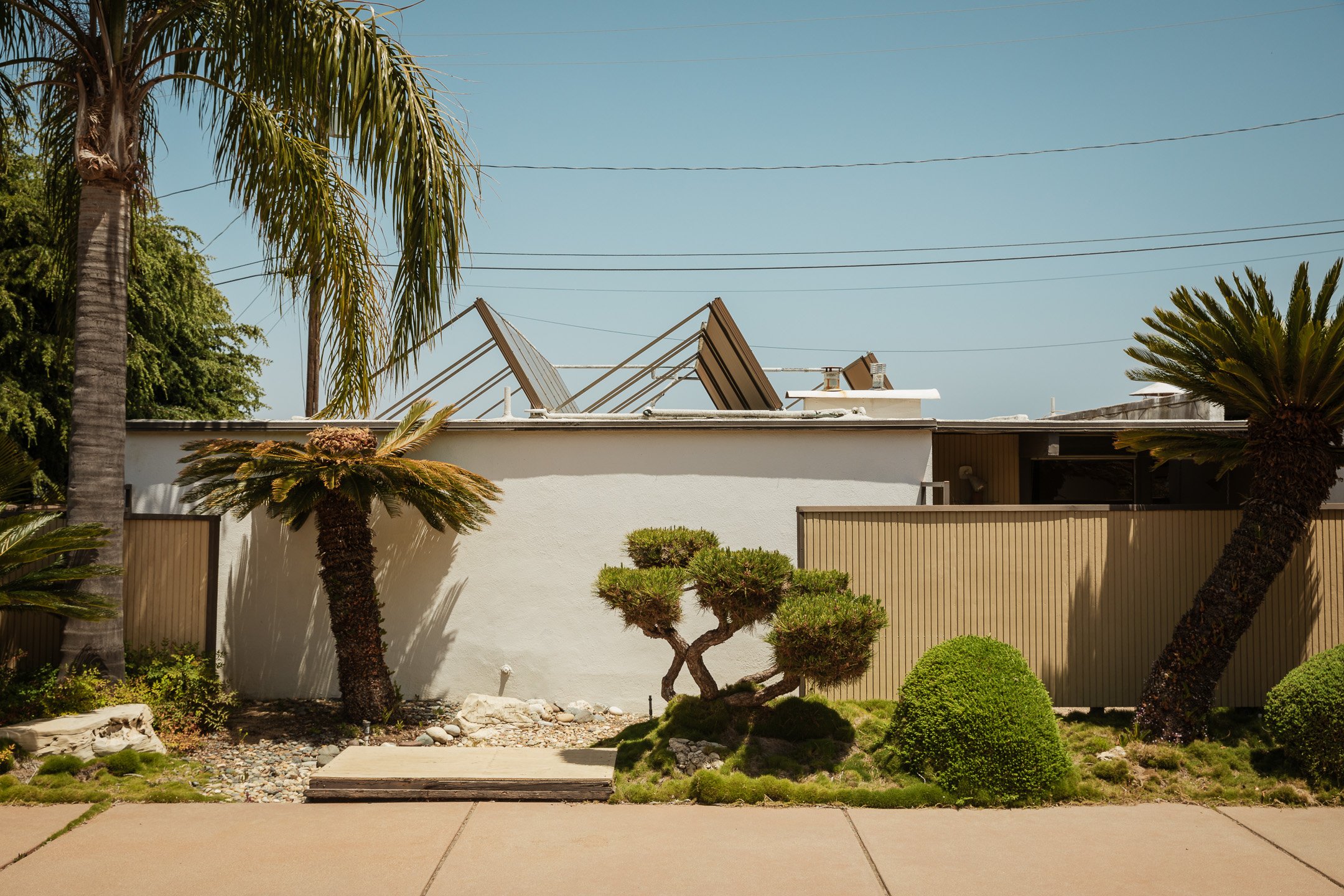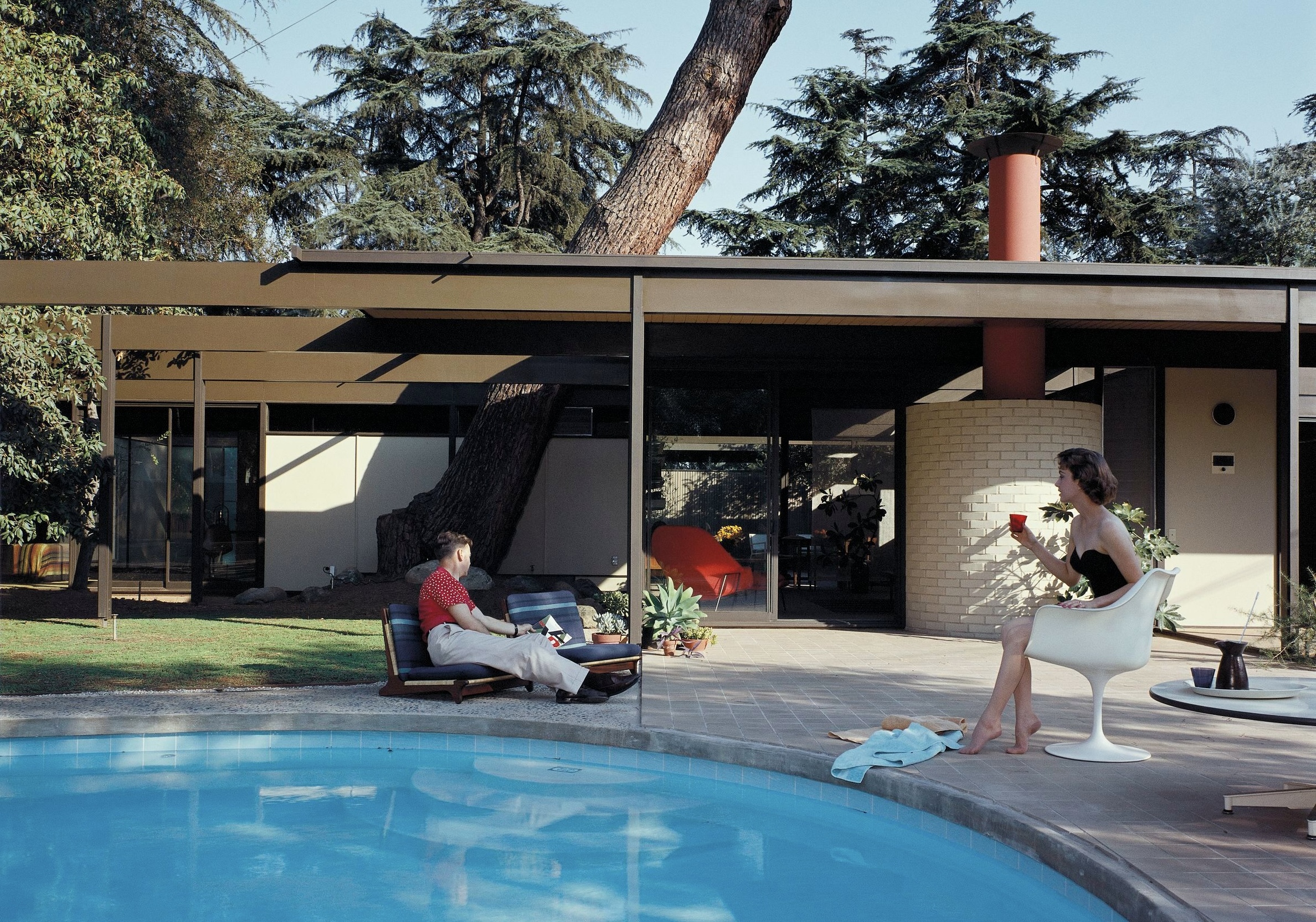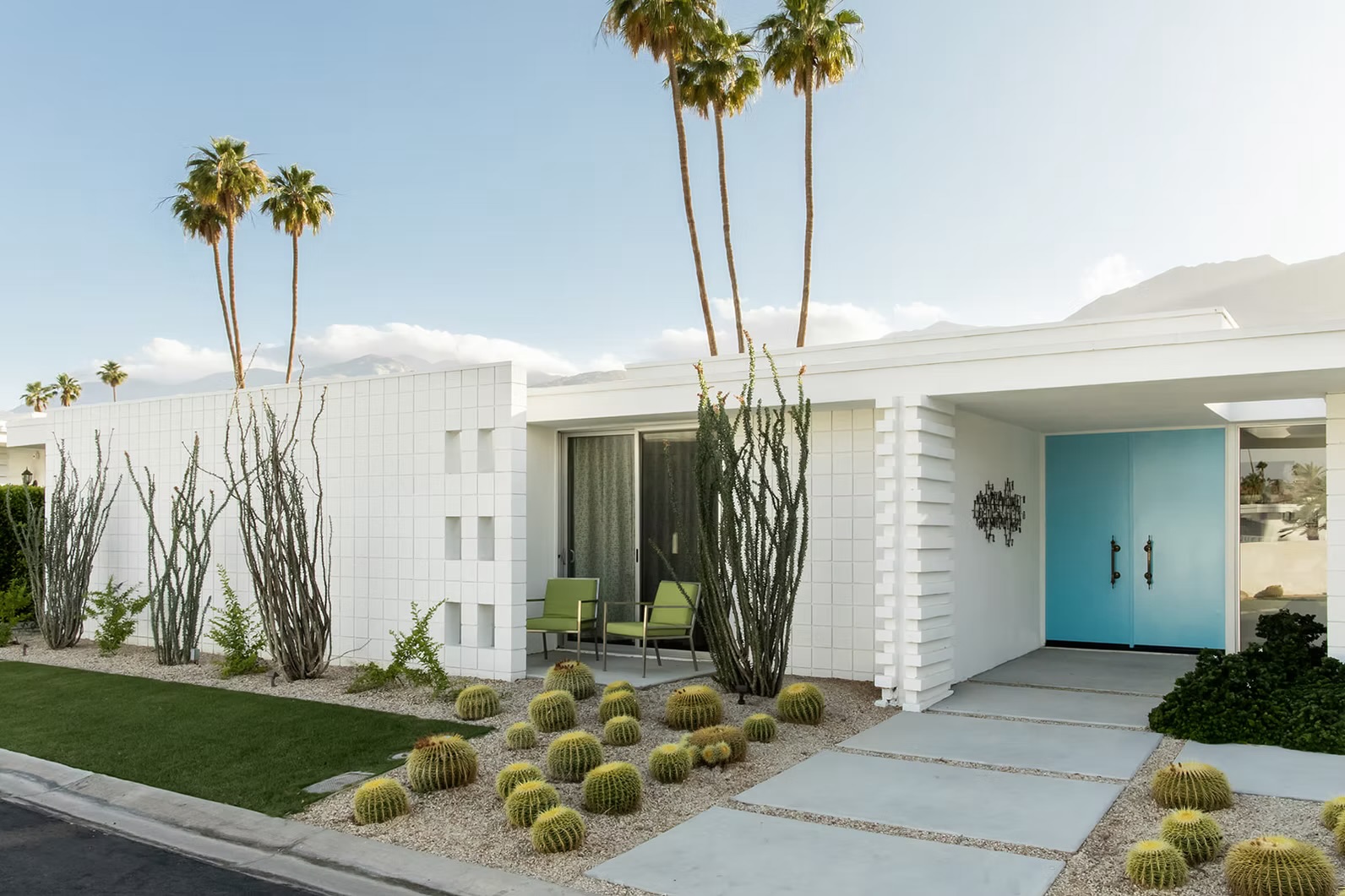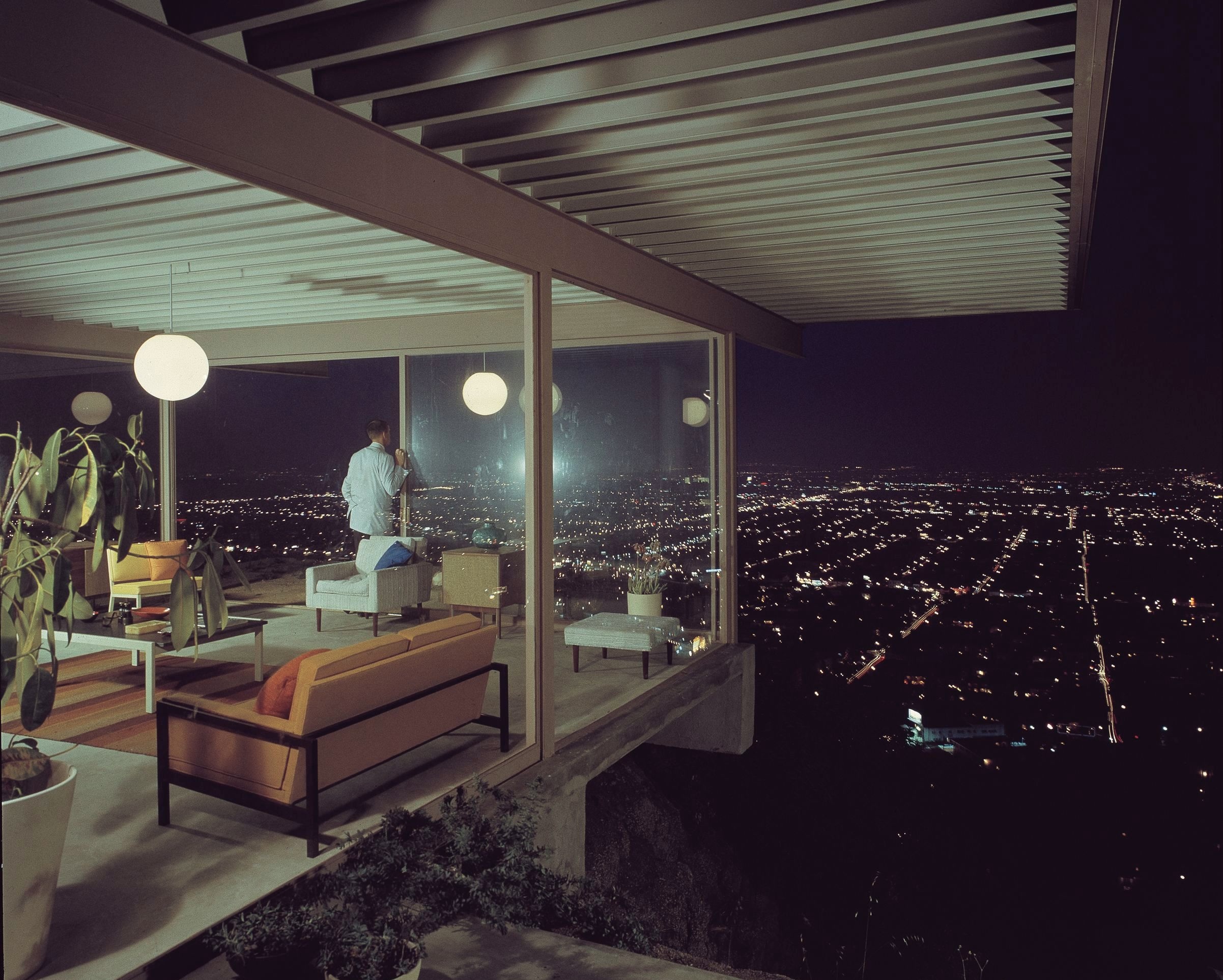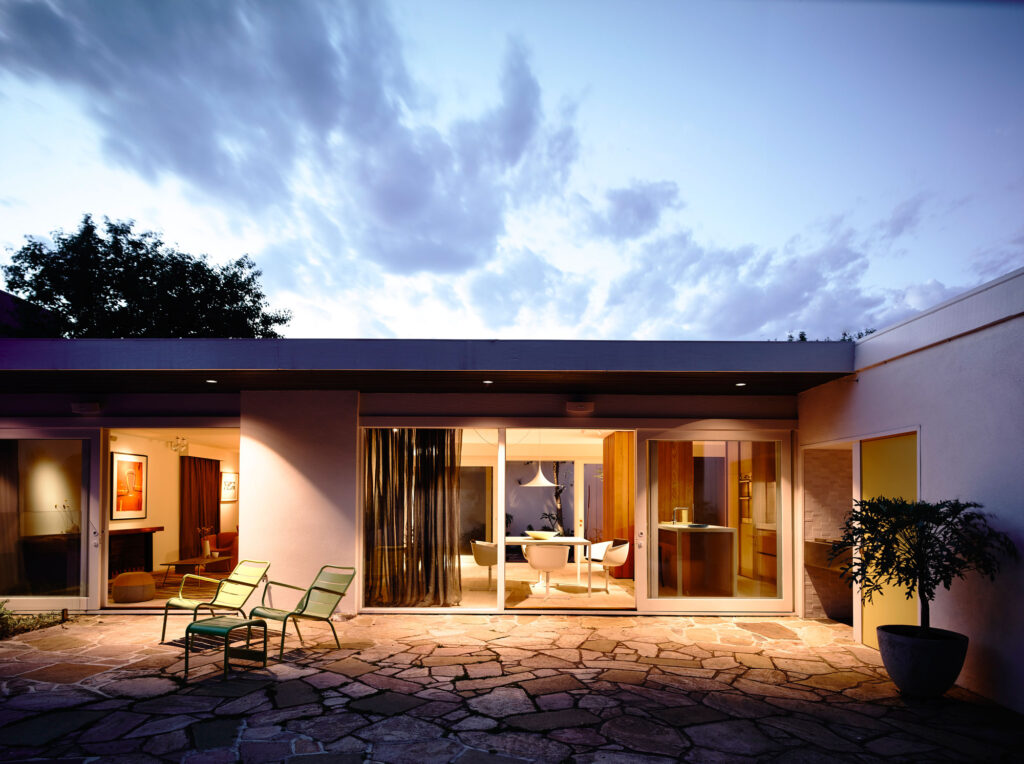
Text provided by Kennedy Nolan Architects
This project involves the re-organisation and interior design of a mid-twentieth century courtyard house in Bayside Melbourne. The existing house provided an inspiring departure point for a design which draws on the late modernist houses of California.
The aim was to exploit the transparency through the house and site afforded by the courtyard plan, to amplify the close relationship of interior and exterior space and to emphasise a sense of calm and refuge by a restricted, neutral palette.
Flexibility in the plan is afforded by large cavity sliding doors, which are sometimes faced in mirror to confuse the enfilade of the plan. The austerity of the minimalist form and expression is countered by the extensive use of American Oak for warmth and travertine for texture.
The austerity of the minimalist form and expression is countered by the extensive use of American Oak for warmth and travertine for texture.
The interior design undertaken for this project re-positions the house from a commonplace domestic interior to one which draws on the best elements of late modernism, while also remaining resolutely contemporary.
The approach is notable because it is achieved by sensitive engagement with both the apparent attributes of the architecture, but more importantly with the potential of the best expression of the style.
Specifically, this is achieved through structural manipulations – de-limiting horizontal space, creating a balanced and mutually supportive relationship between interior and garden, introducing flexibility and nuance through sliding panels, curtains, lighting and mirrors.
The expression of this concept in a cohesive, warm and textural palette makes the result appear casual and domestic.
The greatest achievement in terms of sustainability is the way that the existing house was able to be re-imagined with no change to the footprint – a frugal use of embodied energy – and that the works facilitated significant upgrade of the thermal efficiency of the house through double glazing and insulation, as well as the installation of a solar powered electricity generation.
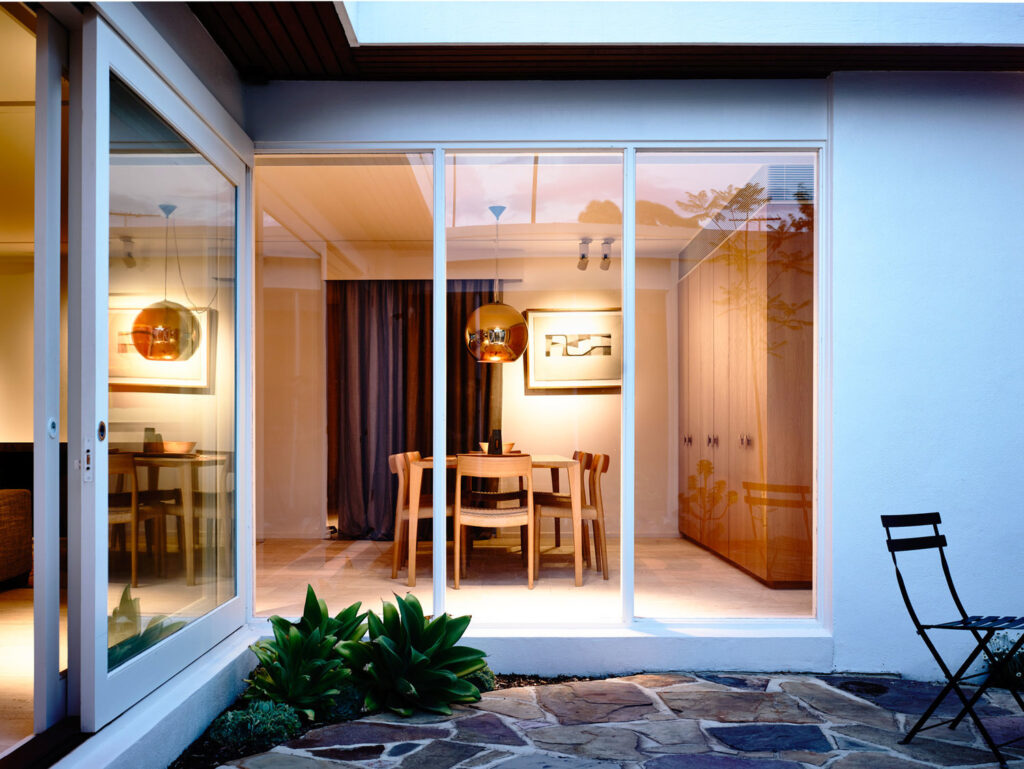
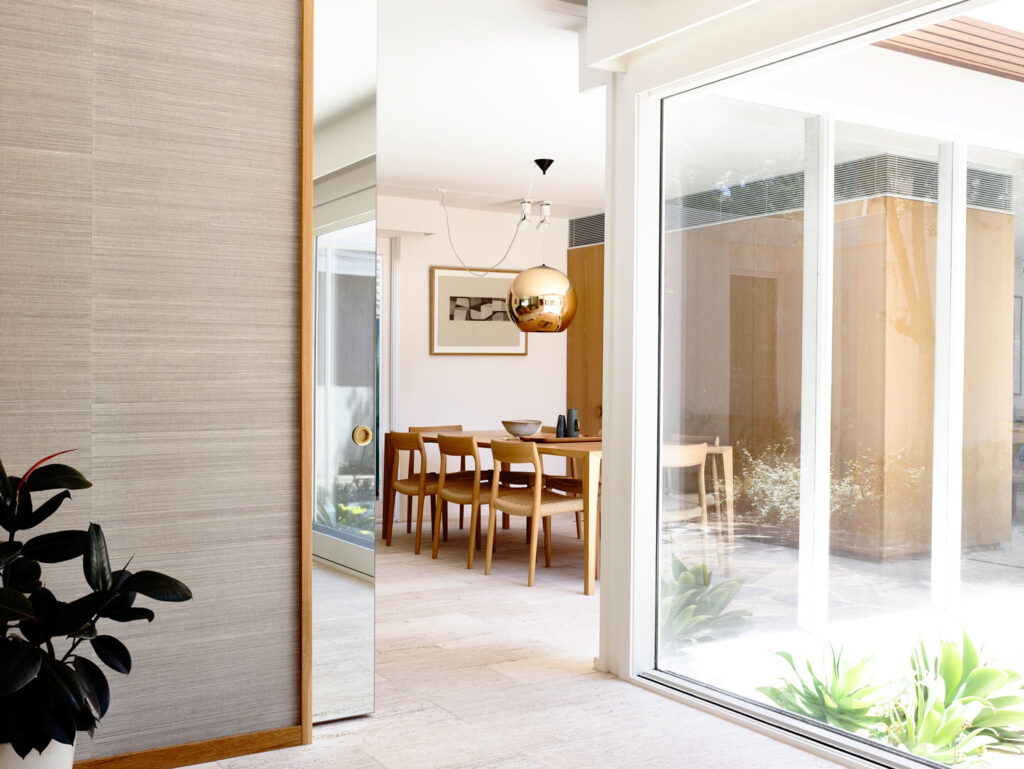
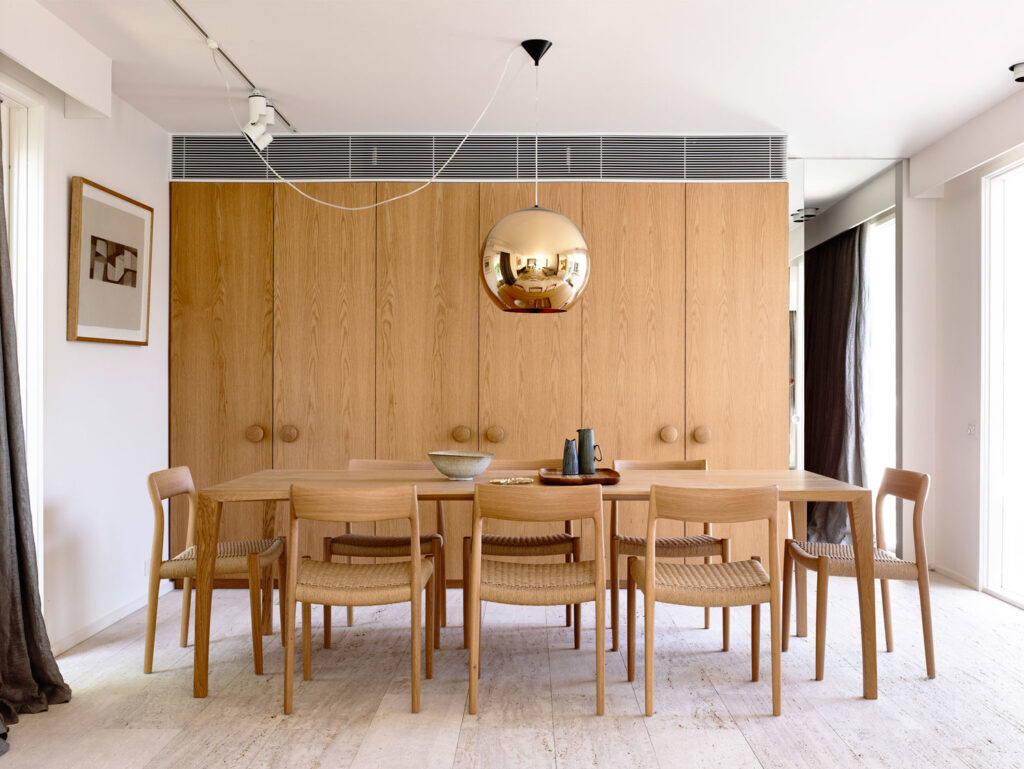
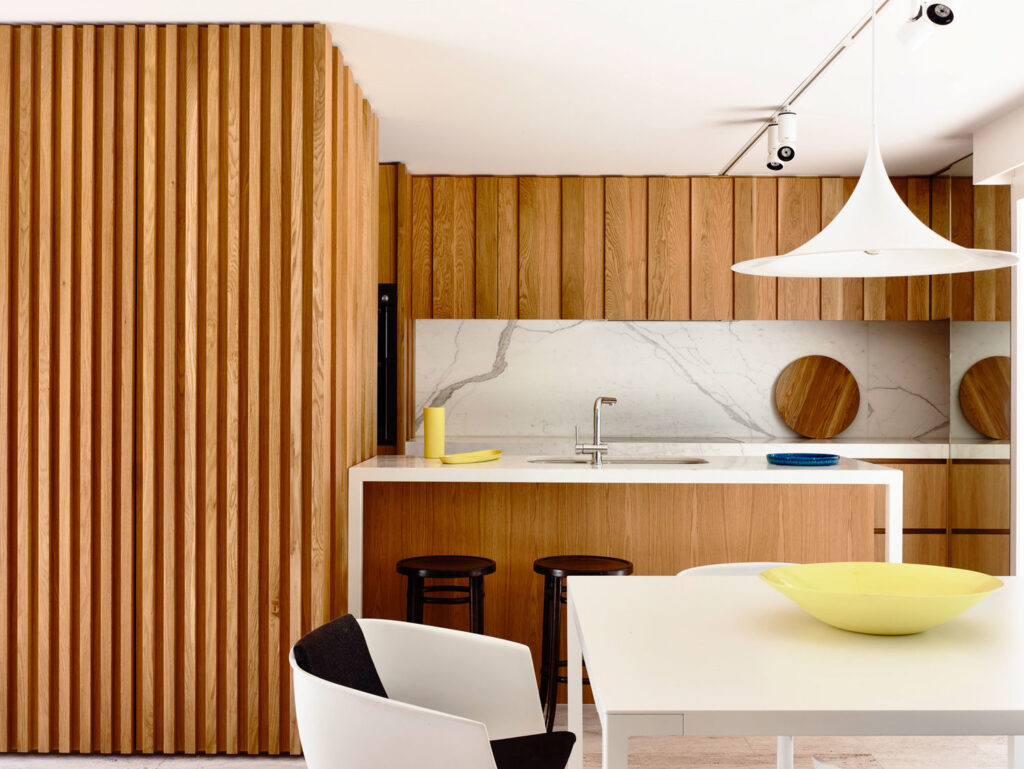
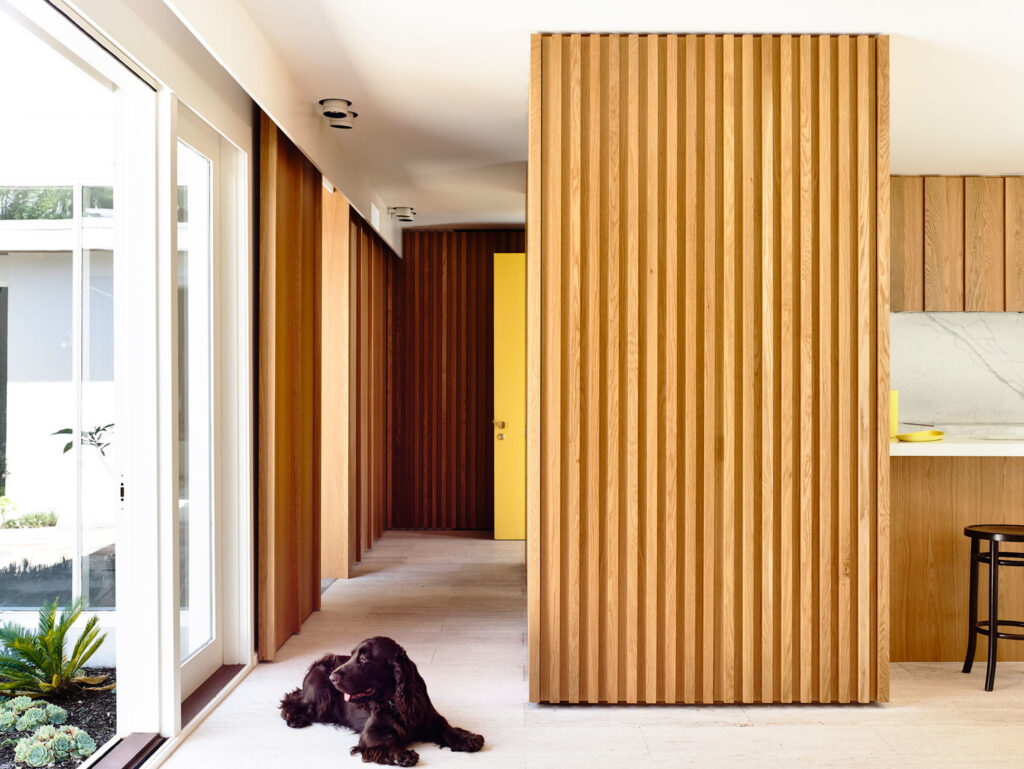
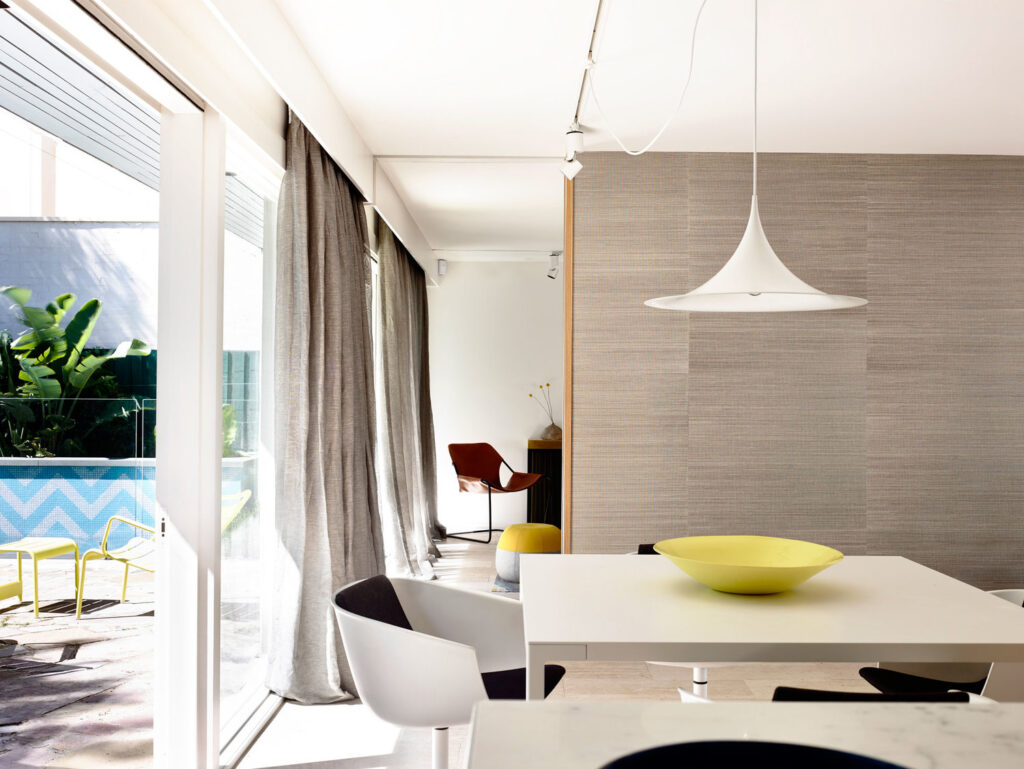
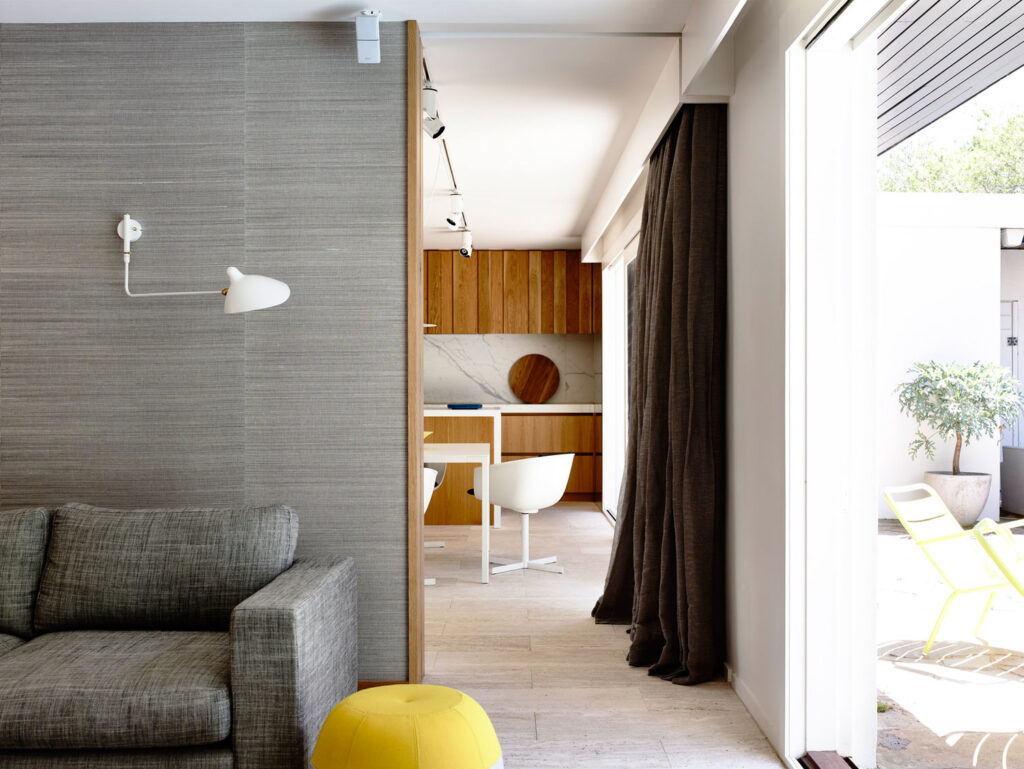
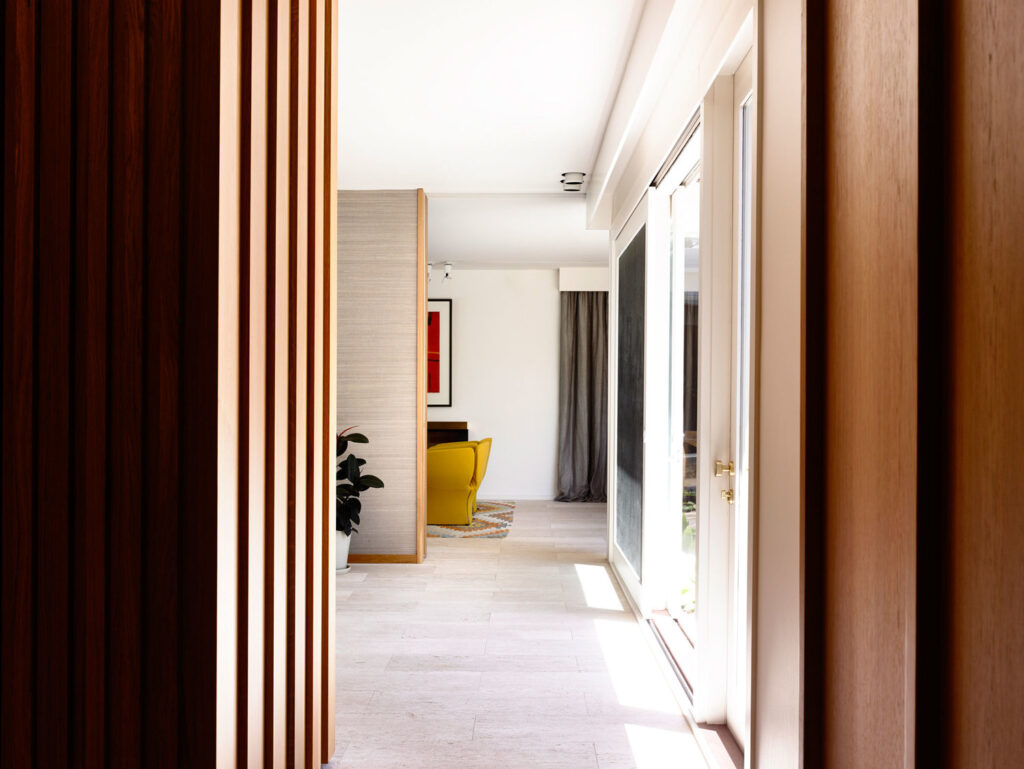
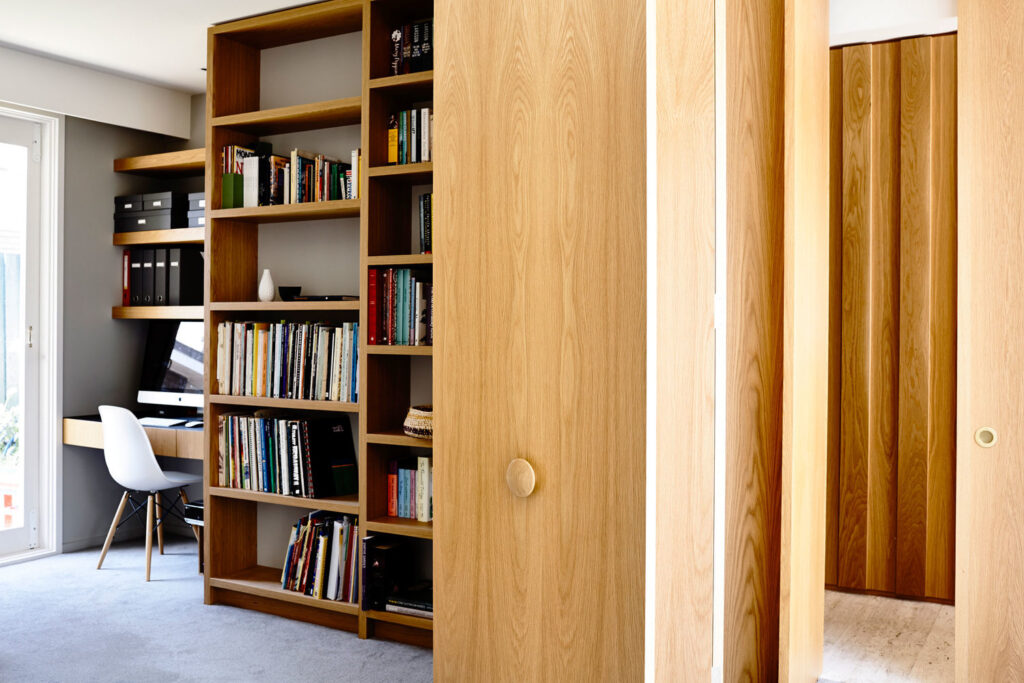
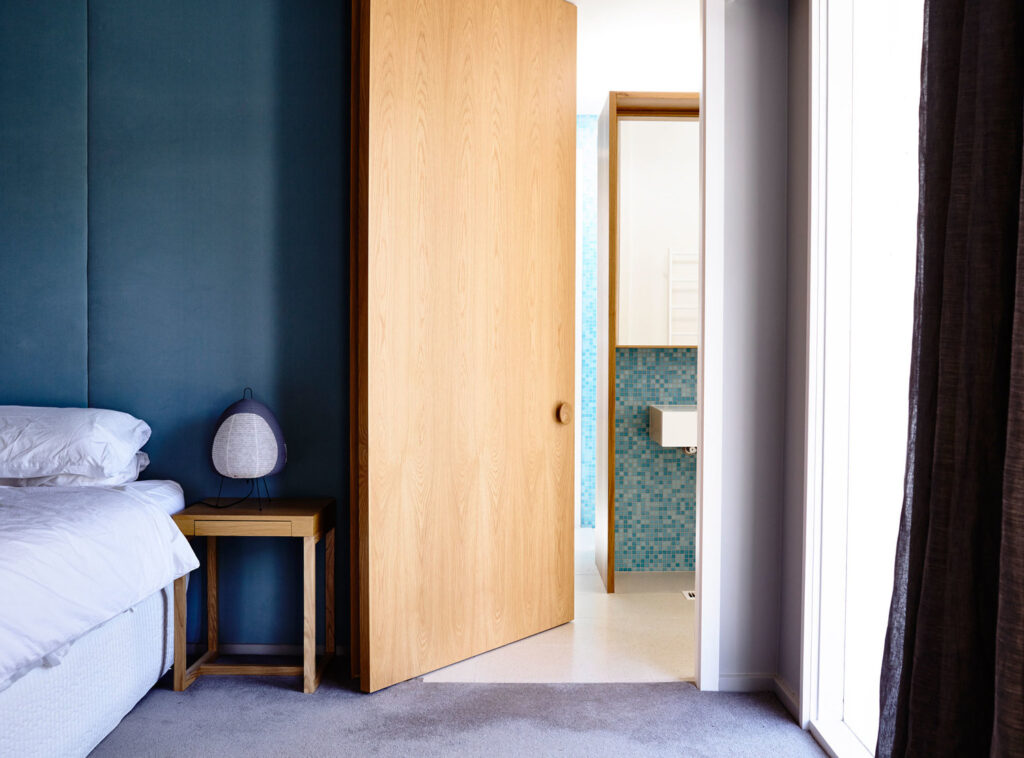
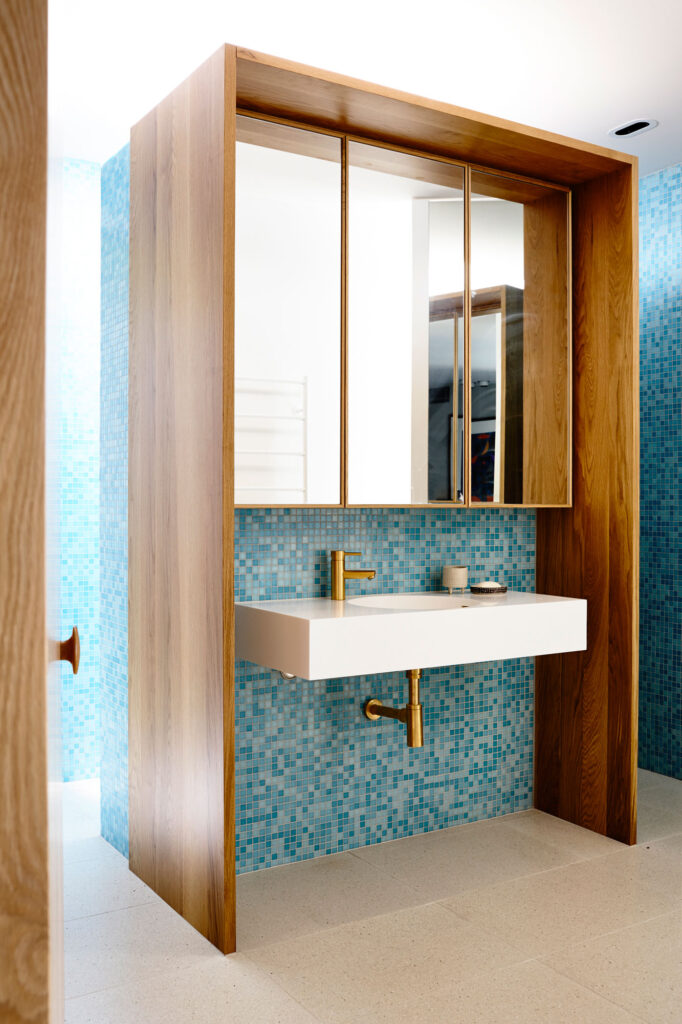
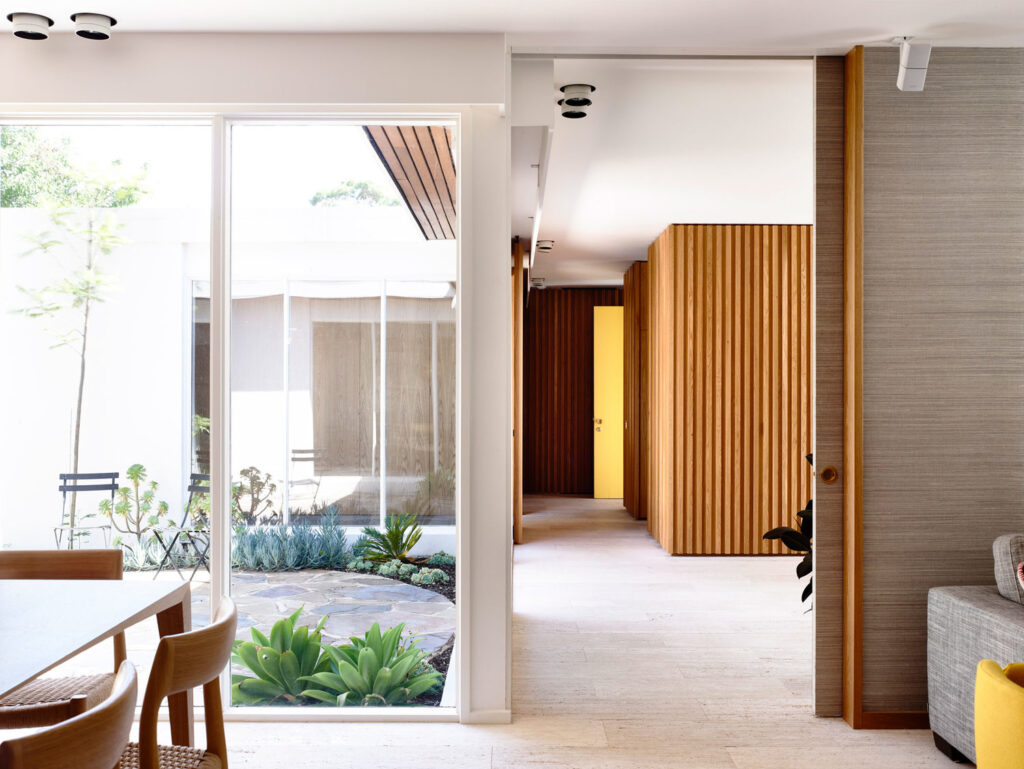
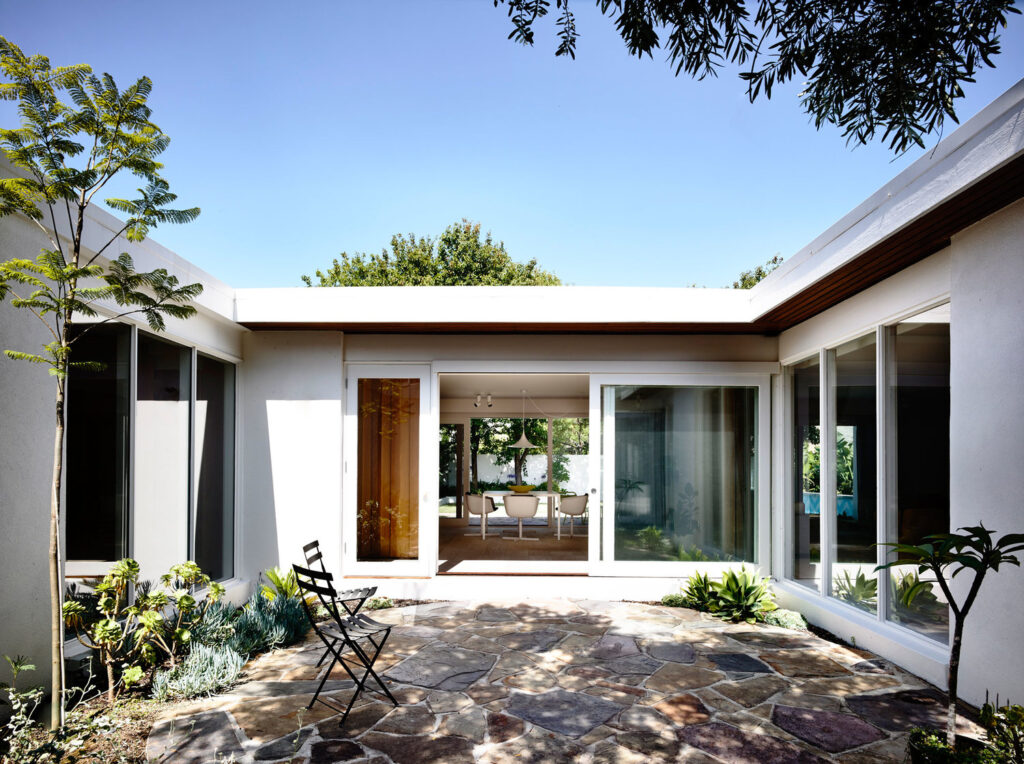
Photos by Derek Swalwell




